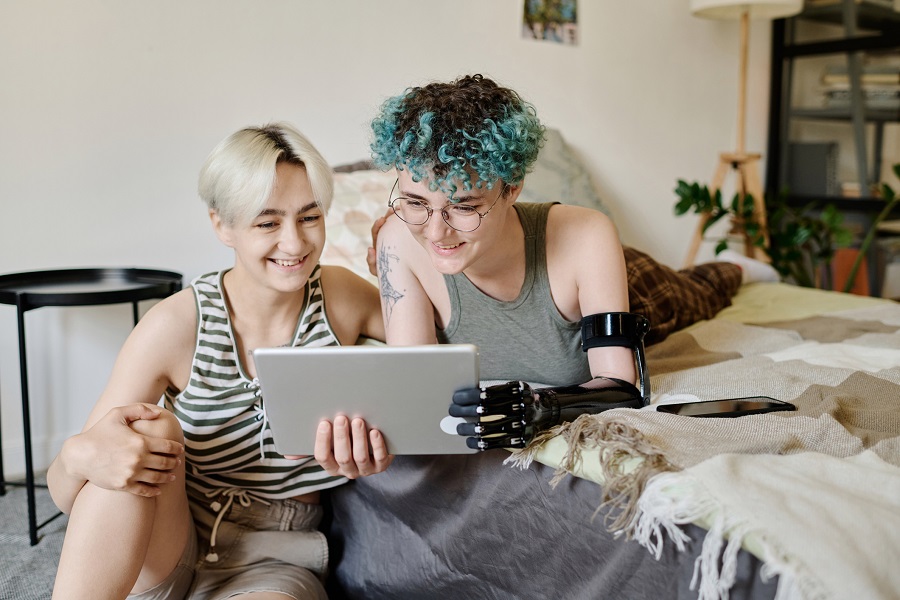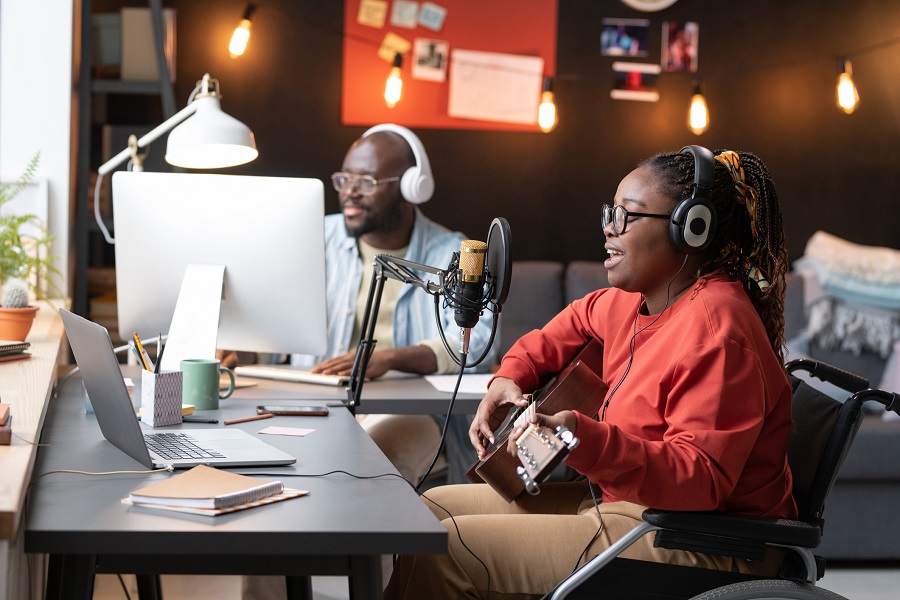State of Colorado Accessibility Newsletter - February 2024

Accessibility Essentials
“What is an EEAAP?”: Creating an Accommodations Plan
By Karen Pellegrin (she/her), TAP Senior Program Manager
An Equally Effective Alternate Access Plan, or EEAAP, is a document that’s completed by your government program, agency or entity and outlines the steps it will take to provide the same information and services offered by a technology that is not accessible. These plans were originally created by higher education institutions across the country to document required processes for accommodations and the use of this structure is equally applicable to many other organizational structures including government.
An EEAAP is intended to be an internal document that tells your organization the process, roles and responsibilities for providing an accommodation. It’s a living document that you’ll review and update regularly and may include details on everything from who is accessing the product (your audience) to how your staff will be trained and respond to accommodation requests.
When should you start?
The short answer, immediately! As you prioritize, test and remediate your digital products you will have some that aren’t currently fully accessible and some that you haven't yet had the opportunity to test or remediate for accessibility. When inaccessible products are identified in your inventory, such as a website or programmatic collection of PDF documents, you’ll need to draft a general plan that describes the product, who is responsible for the product, and the details of your process and roles to support that product.
The Technology Accessibility Program has developed an Equally Effective Alternate Access Plan Guide and template to help you get started in building your own plan. You can learn more about when and how to create a plan and use the template to quickly create a repeatable process for developing plans for your products. You can even create an automated process by converting our template into an easy to use online form.
A few things to remember as you develop your plans:
- Tailor the EEAAP template to align with your specific organization's needs and practices
- Engage stakeholders in developing and implementing the plan
- Regularly review and update the plan as needed
Creating a plan for how to support people with disabilities and providing them accommodation will help you meet the needs of your customers, improve customer service, and assist you in avoiding costly legal action.
Accessibility News
Accessibility rulemaking update
By Alice Huyler, Senior Policy Advisor, OIT Rulemaking
On Jan. 23, OIT convened a public rulemaking hearing to gather input from the public on the proposed Technology Accessibility Rules. Nearly 400 people attended the hearing, and over 30 provided testimony! OIT also received dozens of written comments in January, on top of the comments from previous months. You can read the written comments and review a recording of the public hearing. A written transcript from the hearing and the presentation slides are available with other rulemaking materials in the hearing exhibits folder.
Next up, we're working on incorporating the feedback we received through these comments into the rules. Tentatively we hope to release the final adopted rules in February. We will send an email notice with the adopted rules to everyone who has engaged with the rulemaking process or who signs up to receive notifications. Rulemaking information is also available on the Hearings and Rulemaking page of the OIT website.
Thank you to everyone who has participated in the development of the rules. We have digested and explored your comments and appreciate your assistance with making quality rules. That said, remember that the rules are never truly done, and we will continue to rely on your input to refine the rules moving forward.
Accessibility & You
Accommodations are required now! Disclosure is not
By Chelsea Cook (she/her), TAP Accessibility Consultant
As government employees, we want to make the lives of Coloradans and colleagues we serve easier. As we work toward accessibility goals, it is only natural to bring up accommodations to fill in the gaps.
Reasonable accommodations have been around as long as the Americans with Disabilities Act (ADA). The idea of them is not new. They are already required to fill accessibility gaps.
It might also be natural to assume, “Well, I need to know who has a disability and what that is so I can help.”
This is a trap! Don't fall into it!
While well-intentioned, the above statement and others like it touch on the hot-button issue of disclosure. Employers are prohibited from asking invasive questions about your disability unless they are inquiring about accommodations you need and whether you’ll be able to complete the essential functions of the job. The Equal Employment Opportunity Commission (EEOC) has more information about that.
Disclosure can be a sensitive topic for many people with disabilities because it is effectively outing to the world that they have a disability. Some people may be more comfortable with their disabilities than others, and some invisible disabilities still carry significant stigma. It also puts people with disabilities in the “other” category, and that is not the message we want to send when talking about accessibility. While people with disabilities have protections under the ADA, it can still be a risk to the individual where employment is concerned.
Disclosing a disability is up to the individual, not the institution. There are also levels, ranging from not at all to a little bit to full disclosure. For example, depending on context, I may say that I use assistive technology in an email to a work colleague whom I haven't met before. This gives them enough information to help me with the task at hand, while not giving them a reason to freak out about my blindness.
Freaking out about blindness does happen. If I disclose in a personal setting (for example to a customer service representative on the phone) and that person does not know how to react, things can get awkward very quickly. I've been put on hold while someone escalates to their supervisor, or been frankly asked, “Can't a friend or family member help you?” This is very uncomfortable for me, as it makes me feel different when I just want the person to focus on what I called them for in the first place.
“This is why accessibility from the ground up is so important,” said my team’s fearless leader, Karen Pellegrin. “You never know who has a disability, and they’re not required to tell you.”
Resources:
Video from Rocky Mountain ADA on How and When to Disclose Disability
The ADA: Your Employment Rights as an individual with a Disability (EEOC)
Guidance on Visual Disabilities in the Workplace (EEOC technical document)
Accessibility Tips
Tracking accommodations
By Kevin McDaniel and Cat Hogan, DPA Statewide Equity Office
As the State of Colorado moves toward full implementation of HB21-1110, it’s important to understand that while we can be one hundred percent compliant, with diligence and persistence, our processes will not always be one hundred percent accessible to every person who interacts with us. This is why a culture of access and accommodation is critical to ensuring no one is left behind.
To capitalize on the accommodations we provide, it’s essential to create processes that allow us to identify the things that work and the things that don’t. With this data, we can improve access for our employees and residents with disabilities and enrich services for all users. Accommodation is an essential source of innovation.
The importance of tracking accommodations
The repeatable stage of every maturity model process is implementation. In this stage, we implement our vision of what we want our workforce to look like through policy, advocacy and prioritization. If we aren’t aware of how successful our policies are, we have no idea what improvements need to be made. The same is true with accommodations.
Tracking accommodations allows agencies to monitor whether the provided accommodation is actually helping the employee perform their essential job functions. Regular check-ins with employees can also be a source of information and insight into challenges or opportunities they may be facing, which can help ensure the accommodation is sustainable and effective over time.
Maintaining records can help with tracking efforts. Documenting the types of requests, dates, environment, evaluation process and feedback mechanisms we use ensures our hard work results in the most optimal outcome.
Tracking accommodations also helps with identifying trends and patterns in employee and resident needs. The data collected can be used to help improve other related Americans with Disabilities Act (ADA) processes, policies, and procedures, helping to foster a mature accessibility program within your agency.
Ultimately, tracking accommodations shows employees that your agency takes the needs of its personnel seriously, and demonstrates that your organization is invested in finding solutions that work for them.
Tips for tracking accommodations
When tracking accommodations, several key elements deserve special attention.
Implementation stage:
- Date and type of request
- Supporting documentation
- Decision and rationale
- Accommodation provided
- Implementation date and timeline
- Cost and resources
Monitoring stage:
- Feedback from regular check-ins
- Documentation of communication between the agency and the employee
- Data on accommodation effectiveness
- Date of last compliance review
Some examples of what to include in your agency’s accommodation checklist are:
- Name, date of request, type of request
- Decision and rationale
- Accommodation
- Implementation date
- Cost and resources
- Feedback
- Documentation
- Accommodation effectiveness
- Last compliance review
With the information gleaned from this data, the agency can implement strategies, training, and policies and procedures that will help the organization better identify ways to make all employees successful in the work they do for the State of Colorado.
New Resource: ADA Accommodation Fund (state agencies only)
Please note, this resource is not available to local government entities.
When you’re tracking accommodations remember that you are not alone! The State of Colorado ADA Accommodation Fund was established as a safety net for all state agencies as a way to improve access to ADA accommodations. The ADA Accommodation Fund is managed by the Statewide Equity Manager - Accessibility and the ADA Accommodation Specialist in the Department of Personnel and Administration. The ADA Accommodation Fund is available to reimburse physical accommodation requests for new and existing employees, members of the public, and for other accessibility modifications.
All state agencies can request funding reimbursement. The fund can be used for all Title I and Title II requests. To submit a reimbursement, complete the request form. Questions can be directed to Cat Hogan at catherine.hogan@state.co.us.

Small bytes of accessibility
Adobe is offering a free Intro to PDF Accessibility with Adobe Acrobat course on Thursday, Feb. 22, at 11 a.m. Learn how to:
- Locate accessibility tool capabilities within Acrobat
- Quickly check document accessibility
- Easily create accessible PDFs using Microsoft Word
- Use automation capabilities to expedite daily document accessibility tasks
Key takeaways on accessibility vs. accommodation
- Accessibility is proactive and strives to remove barriers during the design stage of an event, program, or service.
- Accommodation is reactive and strives to remove barriers caused by inaccessible design. This ensures people with disabilities have the same access as people without disabilities.
Notable & Quotable
“Accessibility is not a problem to be solved. It is a culture to be built.”
- Sheri Byrne-Haber, multi-award winning values-based engineering, accessibility and inclusion leader

